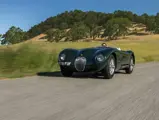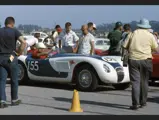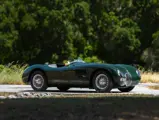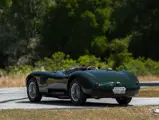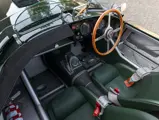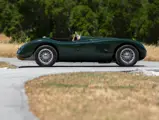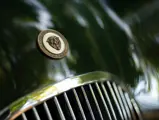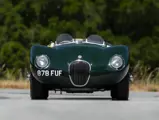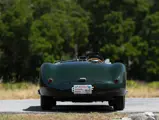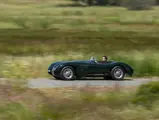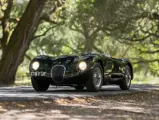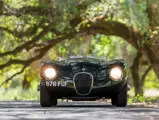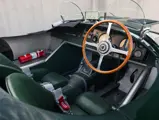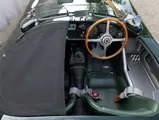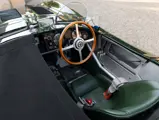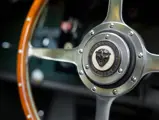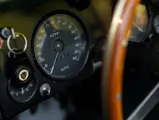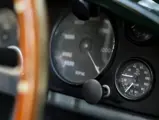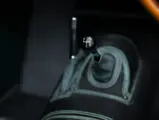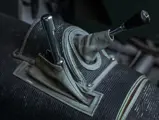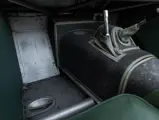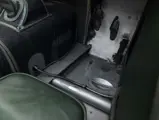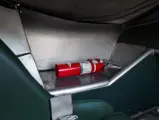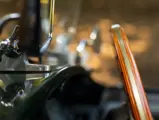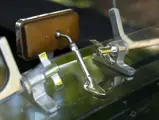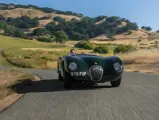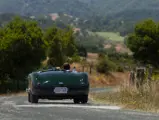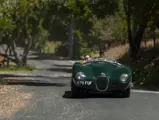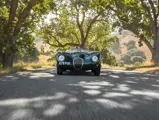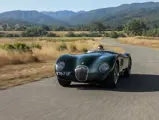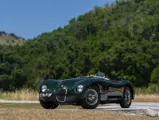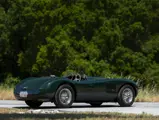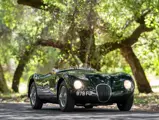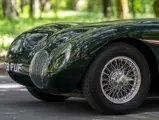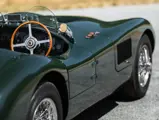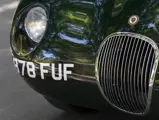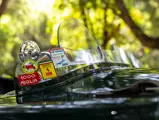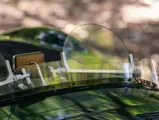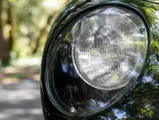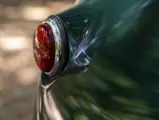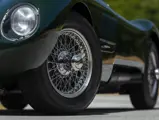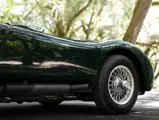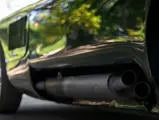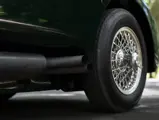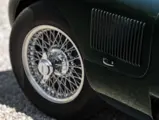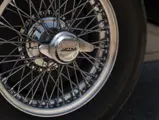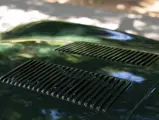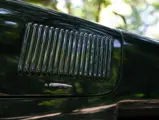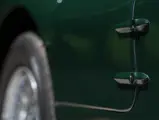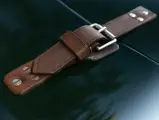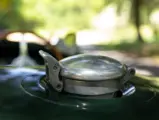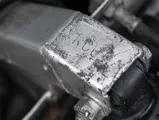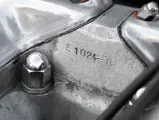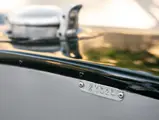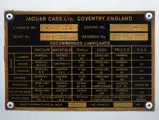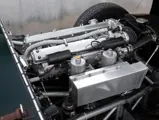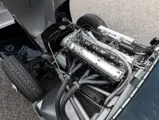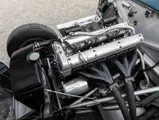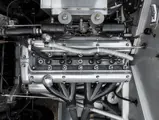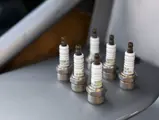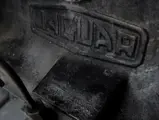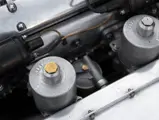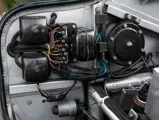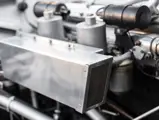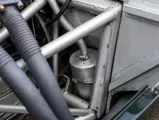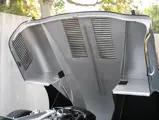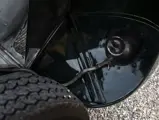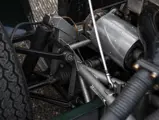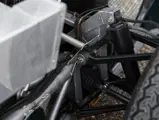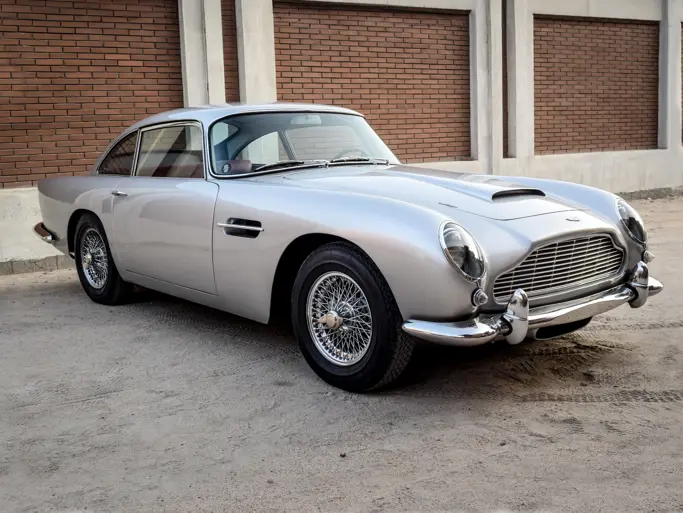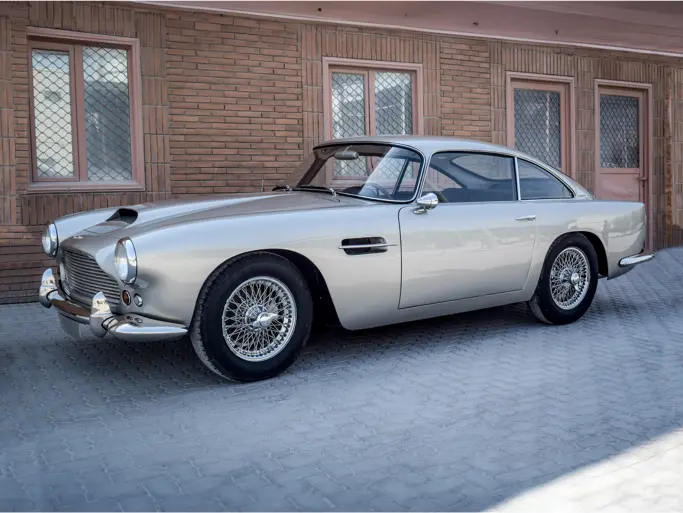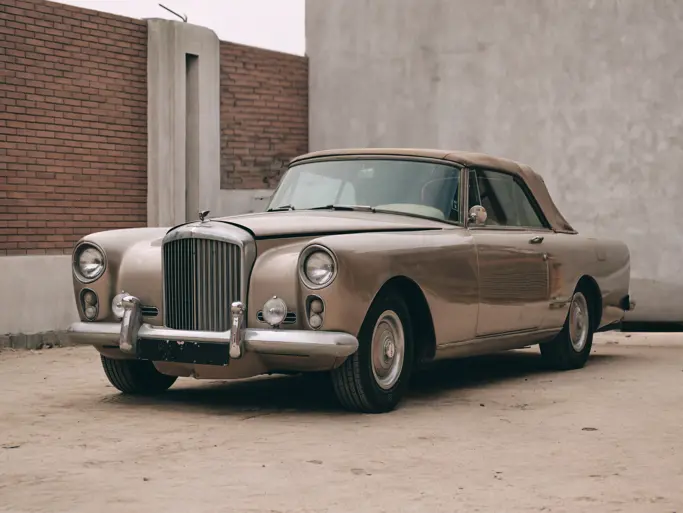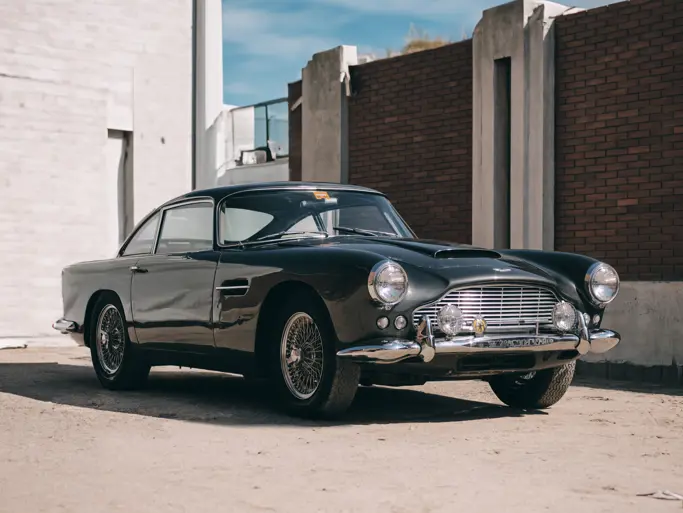Monterey 2023
1952 Jaguar C-Type
{{lr.item.text}}
$3,500,000 - $4,250,000 USD | Not Sold
 | Monterey, California
| Monterey, California
{{internetCurrentBid}}
{{internetTimeLeft}}

- One of just 53 genuine Jaguar C-Types produced
- Raced by Phil Hill at the Lone Star 200 in Austin, Texas, finishing 2nd overall
- Placed 1st overall at the six-hour Torrey Pines endurance race in 1955, driven by Pearson ‘Pete’ Woods
- Well-known in the C-Type community, with documented ownership from new
- Restored in the late 1980s by marque experts in the United Kingdom
- Presented in its factory-correct color of British Racing Green
- Offered for the first time in nearly three decades; accompanied by a generous file and copies of period racing photos
Few sports-racing cars have achieved such legendary status as the Jaguar C-Type, which won the 24 Hours of Le Mans twice for Coventry during the company’s domination of the event in the 1950s. The C-Type began life as the famed XK 120 roadster, which had taken the world by storm in 1948 with its revolutionary dual-overhead-camshaft, inline six-cylinder engine.
Several privateering customers entered factory-supported XK 120 examples at the 1950 Le Mans race, and Leslie Johnson’s car was remarkably competitive, spending considerable time in 4th place. After watching the event, Jaguar founder Sir William Lyons and engineer Bill Heynes were convinced that a lighter, more aerodynamic body with modified XK 120 mechanicals had a strong chance of winning the race.
Development work soon commenced, starting with a new lightweight tubular space frame, one of the very first uses of the technique in sports car construction. The XK 120’s rear suspension was redesigned with additional positioning links, and the 3.4-liter XK engine received a new cylinder head, high-lift camshafts, racing pistons, and an un-muffled dual exhaust system, raising the motor’s output to 200 horsepower. Most noticeable, however, was the new car’s exquisite coachwork: a fluid aerodynamic conjunction of curves and bulges penned by Jaguar stylist Malcolm Sayer. The first three cars were hand-built in only six weeks and were the first purpose-built racecars for Jaguar. That purpose: win Le Mans, which they did twice. The triumph spurred considerable customer interest, of course, and the new racing model was put into limited production, with 53 cars ultimately constructed.
One of these 53 genuine cars is offered for sale here for the first time in nearly three decades and possesses a well-documented chain of ownership from new.
After completing assembly 3 October 1952, chassis XKC 024 left the factory just as it presents today in quintessential British Racing Green. Before being dispatched to the United States, the car was subjected to a 90-mile road test through the hills of Lindley, United Kingdom by revered Jaguar factory test driver Norman Dewis. Accompanying the sale is a copy of the incredibly detailed road test report prepared by Dewis on 31 October 1952.
After receiving Dewis’ feedback, Jaguar’s Experimental Department fine-tuned the XKC, and it was dispatched 24 November 1952 for delivery to the pivotal Jaguar dealer, Charles Hornburg of Los Angeles, California. Hornburg sold the car to its first owner, Alex Thompson of Denver, Colorado, who immediately set about racing the car. XKC 024’s first recorded race is perhaps its most famous. On 12 April 1953, Phil Hill piloted it to a reportedly spectacular 2nd overall finish in the Lone Star 200 at Bergstrom Air Force Base in Austin, Texas. Alex Thompson himself also piloted it to 13th overall in a race later that day.
Thompson would sell the XKC mere months later to Jaguar dealer James Harrison of Colorado Springs, Nevada who raced the car at the East vs. West Meeting at March Air Force Base in Riverside, California on 8 November 1953. Driving under #122, Harrison finished 48th in the novice race and was participating in the main race when he and XKC 024 suffered a serious crash. Per the Jaguar C-Type Registry, the car was repaired using a new chassis, center body section, and bonnet.
After its refurbishment, curation of the car passed to Bob Downey and Pearce “Pete” Woods. XKC 024 is known to have returned to the track in 1955, most successfully at Torrey Pines on 22 October where Woods won the six-hour endurance competition, coming in 1st overall after driving the entirety of the race “ironman-style” without a relief driver. Harold Erb also piloted the car in September 1955 at Goleta Airport in Santa Barbara, California. Accompanying the sale are copies of period photos showing Pearce winning Torrey Pines, racing under #70, and Erb at Goleta Airport, racing under #155.
Following the 1955 season, XKC 024 passed through a series of documented owners before landing in the possession of Jim Kirk of Pacific Palisades, California sometime in the 1970s. Copies of period photos showing the car at Kirk’s property wearing black California license plates numbered “899 BNB” accompany the sale. In 1980 the car made its way home to the United Kingdom after being purchased by Peter Agg of Surrey. From Agg, ownership passed to Robert Reed, an American living in Geneva, Switzerland who used the car in the then relatively new Mille Miglia Storica in the mid-1980s.
In late 1988, XKC 024 received a full restoration by marque experts John Pearson of Forge Garage in conjunction with RS Panels, both of the United Kingdom and considered to be best in their respective fields at the time. Upon the restoration’s completion, the car was sold to Jim Wallis, then to Dalle Carbonare of Italy who sold the car to the consignor in the mid-1990s. Under the consignor’s decades of care, XKC 024 has regularly participated in many C-Type rallies, events, concours displays and has even been pressed into service as a daily driver.
It is important to note that, while stamped to match the factory-fitted block, the engine presently installed in the car is not the original unit. Swapped out sometime during its racing days, what is understood to be the car’s original, numbers-matching (but unserviceable) engine block was sourced by the consignor from a prior owner and is included in the sale. The block is now built up into an impressive-looking display engine, though without internals; it is complete with head, cam covers, and even has a pair of correct-specification, sand-cast SU carburetors.
A genuine C-Type with period racing history, including time under the control of the legendary Phil Hill, XKC 024 is a striking example of Jaguar’s revered Le Mans-winner. A true supercar of the period, it should provide exhilarating road use, entry to vintage motoring events worldwide, as well as making for a fine addition to even the most accomplished collections.

